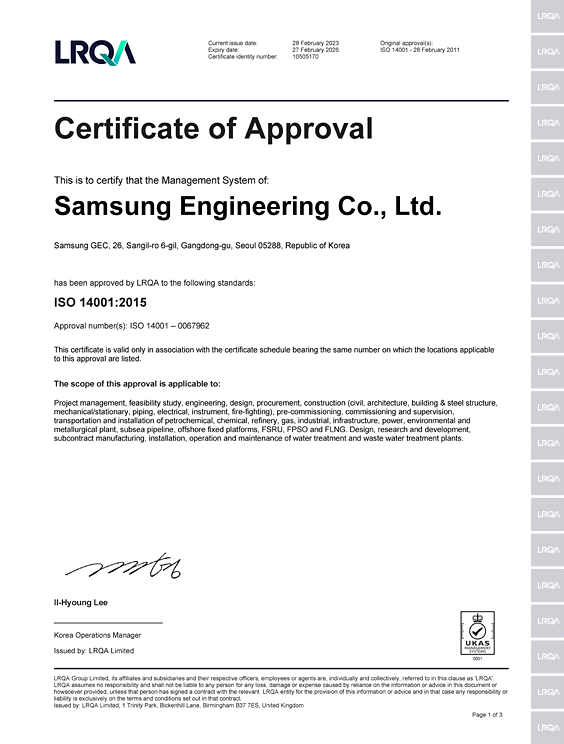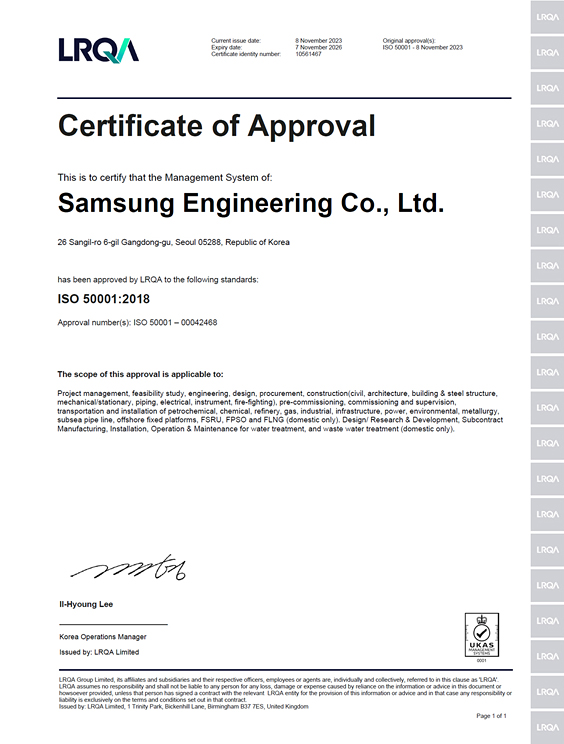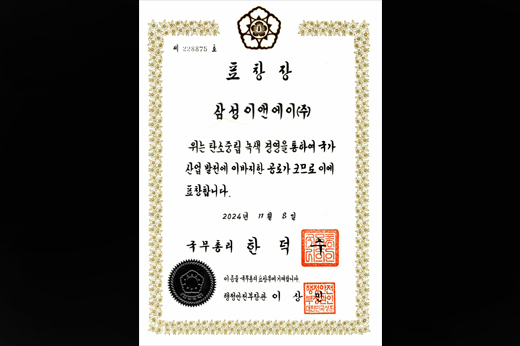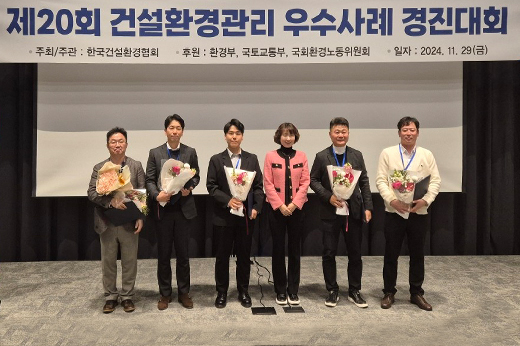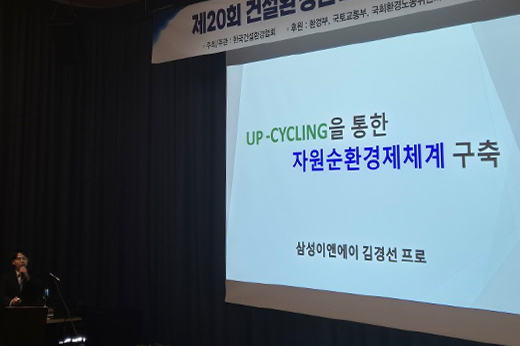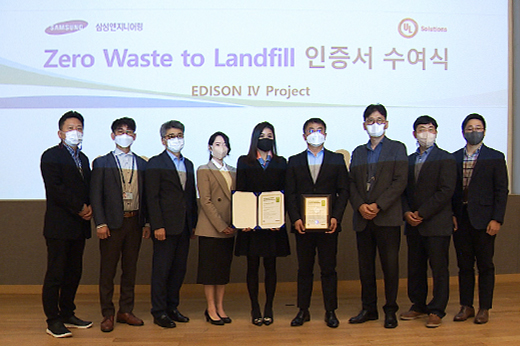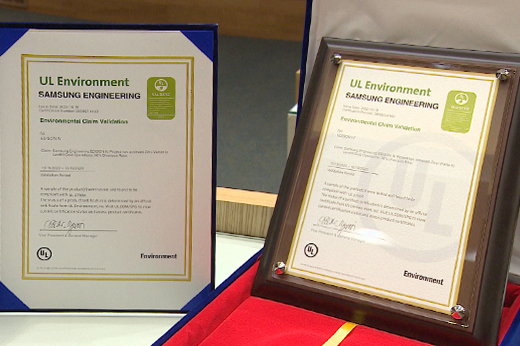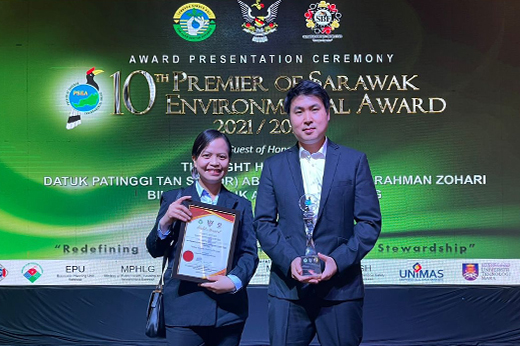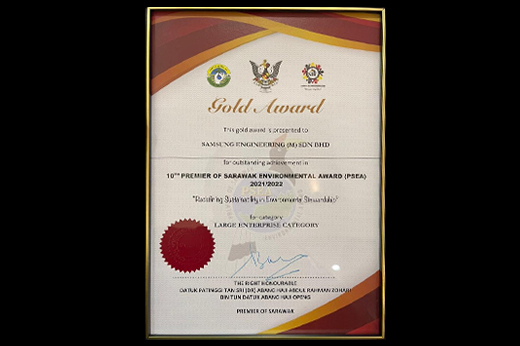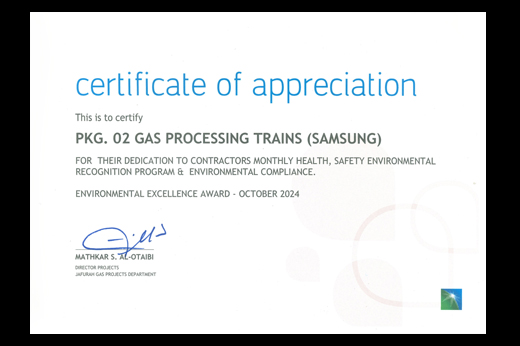Environment
We strive to minimize the environmental impact made during our project execution process and contribute to creating an environmentally-friendly society by taking part in the global effort to overcome the climate change crisis through our energy transitions and environmental infrastructure projects.
Vision and Strategy for Environmental Management
We establish and operate an environmental management system and make efforts throughout the entire business process to achieve targets in accordance with our environmental management strategies. In addition, we are determined to meet the demands of the global community using the environmental management system in accordance with ISO 14001 and carry out various activities to pursue carbon net zero and improve resource circularity.

Vision
Build a sustainable society by carrying out environmentally-friendly activities throughout the entire EPC process
Response to
Climate Change
Achieve net zero emissions by 2050
Pursue 100% renewable
energy by 2030
Increasing
Resource Circulation
Reduce waste and increase recycling
Reduce water consumption and raise water reuse rate
Environment/Energy Policy
SAMSUNG E&A considers eco-friendly energy management as its top priority and strives to protect the environment and promote eco-friendly businesses by implementing energy transitions in all business processes, including energy conservation, global warming prevention, and biodiversity conservation.
- Make continuous improvements in accordance with ISO 14001 to continuously reduce our environmental footprint
- Expand the scope of application in accordance with ISO 50001 to establish and improve the system
- Understand stakeholders needs and expectations and ensure compliance with environmental and social laws, regulations and any other obligations of the Company
- Identify environmental impact caused by our business activities and take mitigation measures to protect the environment and prevent environmental pollution
- Reduce environmental impact of energy & GHG emissions by purchasing & using renewable energy where available
- Resource circulation activation through reuse of waste
This Policy is implemented under the responsibility of SAMSUNG E&A top management. SAMSUNG E&A is committed to setting environmental goals and engaging in eco-friendly activities together with all employees, partner companies and other players of the EPC supply chain, thereby bringing the greatest value to stakeholders and realizing sustainable growth.
Hong Namkoong / SAMSUNG E&A President & CEO
22nd December 2023
Certificate
Our environmental management system received the ISO 14001 certification from LRQA(Lloyd's Register Quality Assurance). To obtain the ISO 14001 certification, the evaluated company must have a system that minimizes environmental impacts caused by its business activities. The company is also establishing environmental policies and goals, and carry out, monitor and review activities aimed at accomplishing them.
SAMSUNG E&A received the ISO 50001 certification from LRQA(Lloyd's Register Quality Assurance). ISO 50001 is an energy management system. To obtain the ISO 50001 certification, it is necessary to establish a continuous and systematic energy management system to improve energy efficiency. The company is also establishing Energy policies and goals, and carry out, monitor and review activities aimed at accomplishing them.
Achievements
-
2024 Korea Green Management Award – Prime Minister’s Commendation
-
Awarded at Construction Environment Management Contests
-
Zero Waste to Landfill (ZWTL) Validation
-
Premier of Sarawak Environmental Award (PSEA), Malaysia
-
Saudi Aramco Environmental Excellence Award
-
Awarded for Excellence in Climate Change Prevention
Response to Climate Change
We analyze and evaluate the impact of climate change on major business areas such as engineering, procurement, construction, and R&D and implement special strategies for serious risks or identified opportunities. With the aim to achieve net zero emissions by 2050 and pursue 100% renewable energy by 2030, we monitor the greenhouse gas emissions at the head office and our domestic and overseas project sites and continuously seek more ways to reduce direct & indirect greenhouse gas emissions, such as establishing eco-friendly facilities.
Greenhouse Gas Reduction Activities
Direct Emission Management
-
Environmentally-Friendly Construction Method
-
Environmentally-Friendly Materials
-
Equipment and Vehicles
Indirect Emission Management
-
Environmentally-Friendly Engineering
-
Procurement Management
Construction Project Examples of Successful Reduction of Greenhouse Gas Emissions
-
Samsung Electronics Pyeongtaek P Air Pollution Prevention Facility Project
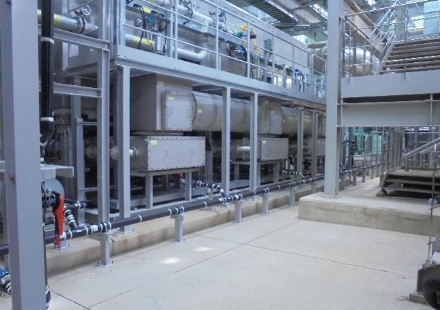
Samsung Electronics Pyeongtaek P Air Pollution Prevention Facility Project
- Client : Samsung Electronics
- Location : Pyeongtaek, Korea (Completed in 2021)
Reduce more than 2 million tons of greenhouse gas emissions annually through the installation of high-capacity greenhouse gas treatment facility
-
Samsung Electronics China SCS Retrofit Project
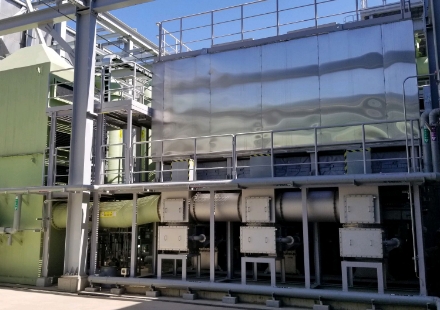
Samsung Electronics China SCS Retrofit Project
- Client : Samsung Electronics
- Location : Xian, China (Completed in 2019)
Eliminate greenhouse gas and organic compounds at the worksite
-
Samsung Electronics Suwon Infrastructure Enhancement Project
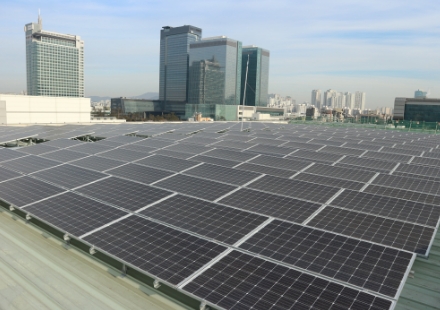
Samsung Electronics Suwon Infrastructure Enhancement Project
- Client : Samsung Electronics
- Location : Suwon, Korea (Completed in 2018)
Maximize energy efficiency and contribute to greenhouse gas reduction by installing solar power generation facilities of 1,893 kW capacity in total.
Increasing Resource Circulation
With the aim to prevent resource depletion and protect the environment, we are committed to increase resource circulation based on the 3R (Reduce, Reuse, Recycle) Principle. In addition, we are making continuous efforts to minimize waste, increase recycling, reduce the use of water, and maximize reutilization.
Waste Management
In order to minimize the impact that construction waste has on the environment, we continuously seek ways to maximize waste recycling and minimize waste generation. We measure the amount of waste by type and the treated amount by treatment method throughout the project process every month using our in-house environmental management system (SEEM-S) and continuously monitor the project sites to ensure the efficient implementation of our waste management plan and achievement of our targets. As for hazardous materials, we establish and apply a thorough plan to prevent leakage incidents in the process of storage, transportation through vehicles and pipes, and maintenance and fuel supply of vehicles. In addition, we carry out various waste reduction activities at the head office and our project sites.
Water Management
We have an organized water management system in place to ensure sustainable water utilization and minimize environmental impact, such as developing a water supply plan by estimating the amount of water usage at all domestic and overseas projects. In the Middle East region, where water supply can be particularly challenging, we treat groundwater and rainwater for utilization at the site and continuously carry out water preservation activities, such as installing ponds at our sites to improve the water recycling rate.
Preservation of Biodiversity
With the aim to preserve and recover the natural ecosystem and preserve biodiversity, our environment policy stipulates the requirements for biodiversity preservation. This policy requires project sites to establish plans for biodiversity preservation before starting the construction work. Sites also continuously monitor activities that may have a severe impact to ensure that the environmental impact to the surrounding area is minimized.
Best Practice
-
Activities for biodiversity preservation at Ras Laffan Project
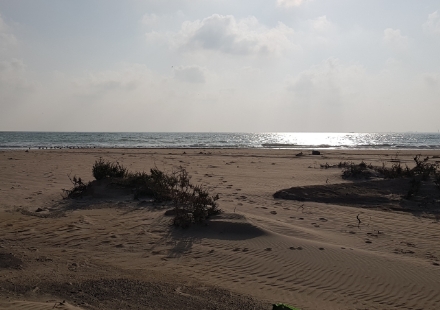
Before carrying out a project, SAMSUNG E&A conducts a survey of target species for protection, conducts an environmental impact assessment, establishes an ecological management plan for the project area, and implements measures to protect biodiversity.
Representative, we are carrying out coastal pollution prevention measures through periodic cleaning and patrols of nearby areas to protect the coastal Important Bird Area (IBA) of the Oman Duqm Project, developing pollution prevention programs to protect mangrove habitats of the Mexico DBNR Project, installing barriers and conducting education programs to prevent disturbance of the piny-tailed gecko habitats of the Saudi Arabian Jafurah Project, and implementing coastal 'Clean up day' activities to protect sea turtles during the nesting season of the Qatar RLP Project.
SAMSUNG E&A will continue to work to prevent the decline of species and preserve ecosystem diversity while striving to carry out projects healthily.
Environmental Training
-
Online Environmental Training
We give online environmental training to all employees to raise their awareness of the importance of environmental management. Environmental training is also included as part of the introductory course of new employees to raise environmental awareness and foster an environmentally-friendly mindset.
-
Training of Project Site Assignees
Prior to starting their assignment at domestic or overseas project sites, the assignees receive training on environmental management requirements, such as legal requirements, SAMSUNG E&A’s standards, and client requirements.
-
Environment Management System Training
We have training programs designed to ensure compliance with ISO 14001. We also train evaluators through internal and external evaluation to prepare for certifications.
Refusal of collection of email addresses
We refuse the unauthorized collection of email addresses posted on this website using an email address collection program or other technical systems. Please be informed that if violated, criminal charges will be filed pursuant to the Act on Promotion of Information and Communications Network Utilization and Information Protection.
